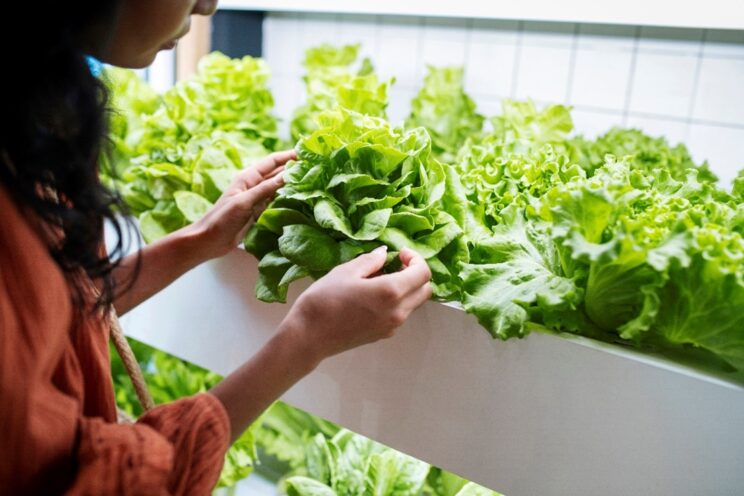
Have you ever thought about creating and caring for your own kitchen garden? Being able to eat fruit, vegetables and greens directly from what you grow? It’s obvious that there is nothing better than eating what you grow, but we don’t often own any land, yard or a small plot at home to be able to set one up. However, if you’d still like to grow your own plants at home and get food directly for your own consumption, here are some ideas for small kitchen gardens that you can set up at home, even if you do not have an outdoor plot.
- Plant pots: probably the best known and most common type of indoor kitchen garden for the home. All you need is to place them somewhere in the house near the window or somewhere with enough light and not to overwater them. Plant pots come in all sizes, depending on the variety or number of plants you want to grow. When using pots, it is not advisable to grow root plants such as potatoes, sweet potatoes or carrots due to their shallow depth. Instead, you can choose aromatic herbs such as lavender, thyme or rosemary.
- Grow tables or boxes: you can get these in different sizes depending on your needs and available space. The most common ones are made out of plastic or wood, so you can either buy them or, better still, reuse boxes that you have at home unused and give them a second life. The only thing to remember is to line the inside with canvas to allow aeration and drainage, and to add a base of stones for easier drainage when you water them. The size and depth of these tables or boxes lets you grow a greater variety of plants than pots, so you can grow root plants without any problem.
- Vertical or hanging kitchen gardens: This type of garden is ideal for houses with little space, since you can maximise the space you have available by arranging the plants vertically. They can be placed both inside the home fixed to the wall, as well as on the terrace or balcony if available. In addition to acting as a vegetable garden, this arrangement can lend the house an ornamental touch as decoration. It can be designed with wooden shelves, or other materials such as plastic. Always remember that the wall where you place it should not receive direct sunlight for many hours. This is ideal for plants that do not need too much space to grow, such as onions, lettuce or peppers.
- Pallet garden: pallets offer numerous possibilities. By cutting up the pieces of wood, you can try different shapes and locations for your kitchen garden. So, you can place them as a base on the ground, attach them to the wall for a vertical garden, or you can even create a kitchen garden in the shape of a ladder. In addition, if you paint and varnish it, it can also serve as decoration.
- Other recycled materials: much of the waste we produce every day can be used as a structure to create small vegetable gardens in your home. Any idea is good to give a second life to your waste. For example, they can be created using aluminium cans, bottles, plastic jugs and drums, damaged fishing boots you are not going to use again, or even old car tyres. Depending on the size, shape and material of the arrangement, you can grow one variety of plant or another and place it in different spots in your home.
- Hydroponic garden: lastly, it is worth noting this is an alternative for growing plants without soil or compost. It is built using PVC plastic tubes, with holes where the different plants are placed. With this system, the nutrients the plants need are supplied by the water circulating through the tubes, with a nutrient solution of minerals. Its shape also allows the roots of the plants to grow down the tube, enabling you to grow a wide variety of plants, including those with roots. PVC tubes can be attached to the wall, maximizing the available space.
These are just some of our ideas for growing plants at home. Any of them can be used to set up your small kitchen garden at home and eat what you grow. If you liked these ideas, stay tuned to our networks, on Twitter @AciertaOrganica, and Instagram @conrde_madrid, as we continue to publish similar ideas or proposals.
Fostering sustainability and eating healthy is possible!
